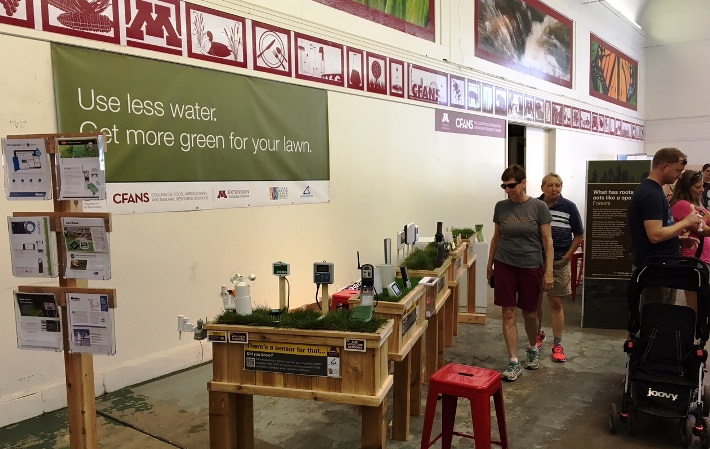Lawn
Which fine fescue should you use?
By Eric Watkins
I often get asked what I’d recommend for a good fine fescue mixture for Minnesota. I usually recommend a mixture of the three fine fescue species that are most readily available: hard, Chewings, and strong creeping red. The tricky part is determining the final components of a fine fescue mixture that will result in a high-performing turf.
University of Minnesota Turfgrass team in the media 4/24/18
Check out our team’s latest efforts in educating the public about our work. We have a newscast segment, a video, several podcasts and an article!
WCCO’s Good Question: What Does This Extended Winter Mean for Our Lawns? featuring Sam Bauer
Beyond Beekeeping podcast interview by Mindy Holahan Peters featuring James Wolfin
Turf Species for Minnesota Home Lawns
Sam Bauer and Parker Anderson of the University of Minnesota have created an infographic that profiles different turfgrass species for use in Minnesota home lawns. This is a great resource to educate homeowners on the characteristics, maintenance, and recommendations of these grasses for specific uses such as under low maintenance or shade conditions.
Can we control lawn weeds without herbicides?
By Jon Trappe
Many plant enthusiasts have observed difficulty planting some plant species around black walnut trees. Black walnut trees naturally excrete chemicals into their environment to make themselves more competitive. This negative plant-on-plant interaction is known as allelopathy, and is more common in multiple plant species than was once previously thought.
Do you really need to rake all your leaves? An update
Here is an updated version of a blog post that was originally published on November 15, 2013. Turf Extension Educator Sam Bauer has been interviewed about this topic in several great articles since then so be sure to check out the links at the end of the blog post!
Survey finds many Twin Cities residents are overwatering lawns
Turf Extension Educator Sam Bauer was featured in a Star Tribune article summarizing some “eye-opening” results of a recent survey of Twin Cities residents on lawn irrigation. The survey, conducted by University of Minnesota researchers and the Metropolitan Council, found many homeowners are not managing their irrigation systems effectively, leading to overwatering of lawns.
